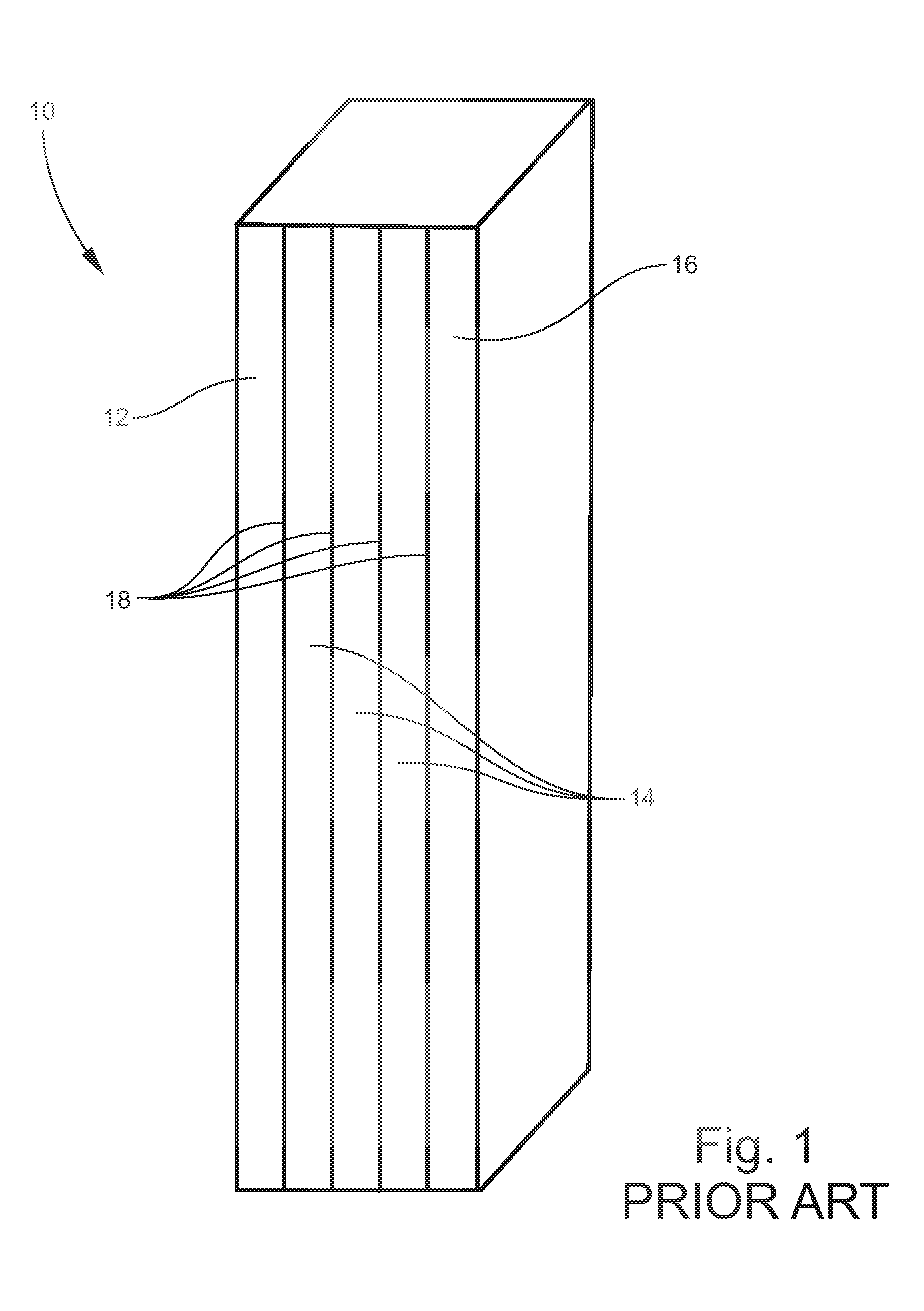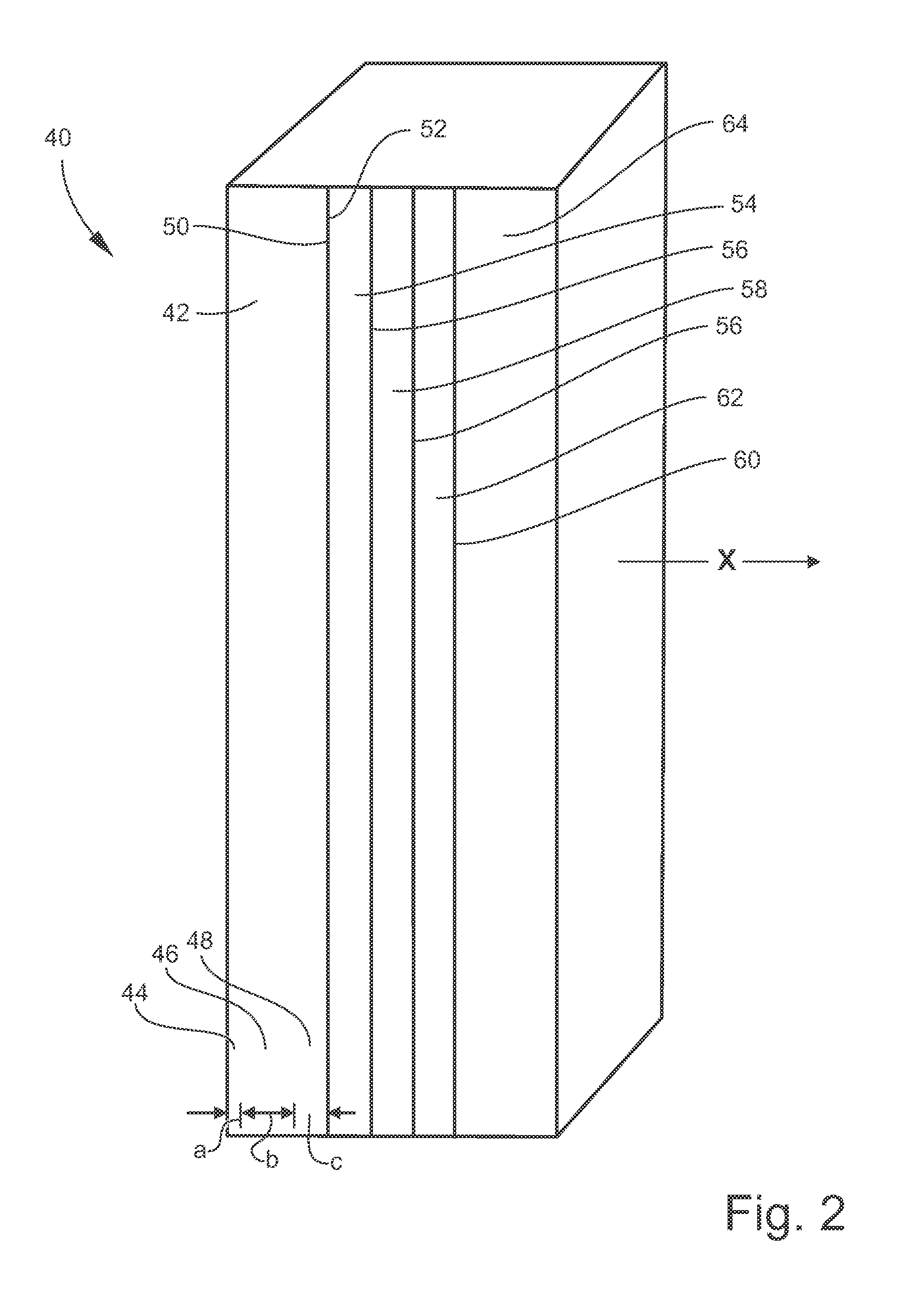Compositionally graded transparent ceramic armor
- Summary
- Abstract
- Description
- Claims
- Application Information
AI Technical Summary
Benefits of technology
Problems solved by technology
Method used
Image
Examples
Embodiment Construction
[0019]A transparent ceramic composite armor may include a compositional grading of the ceramic-glass interface(s) of the ceramic composite armor. The compositional grading is referred to as Functionally Graded Material (FGM). In general, the FGM approach to ballistic protection originated in ceramic-metal graded designs such as those disclosed in U.S. Pat. No. 3,802,850 issued on Apr. 9, 1974 to Clougherty, which is incorporated by reference in its entirety herein.
[0020]In the context of transparent ceramic composite armor, the FGM approach entails the interpenetration of two phases: a transparent polycrystalline ceramic phase with an amorphous glass phase. Stress intensity waves caused by an impact event on the ceramic strike face are better absorbed by the interpenetration of the two phases. Better absorption is accomplished by reducing back-propagation of the stress intensity waves. Reduction of the stress intensity wave reflection leads to an enhanced survival of the ceramic com...
PUM
| Property | Measurement | Unit |
|---|---|---|
| Fraction | aaaaa | aaaaa |
| Width | aaaaa | aaaaa |
| Composition | aaaaa | aaaaa |
Abstract
Description
Claims
Application Information
 Login to View More
Login to View More - R&D Engineer
- R&D Manager
- IP Professional
- Industry Leading Data Capabilities
- Powerful AI technology
- Patent DNA Extraction
Browse by: Latest US Patents, China's latest patents, Technical Efficacy Thesaurus, Application Domain, Technology Topic, Popular Technical Reports.
© 2024 PatSnap. All rights reserved.Legal|Privacy policy|Modern Slavery Act Transparency Statement|Sitemap|About US| Contact US: help@patsnap.com










